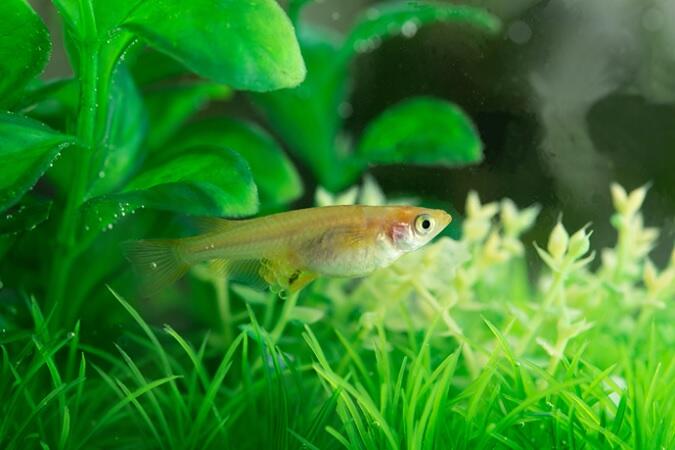Until now, the Japanese rice fish Oryzias latipes (medaka) has been believed to initiate spawning between one hour before and after sunrise based on laboratory studies. Contrarily, the observation in a natural environment showed that wild medaka initiated spawning late at night around 12:00 a.m. This discovery was made by a research team including Specially Appointed Professor Yuki Kondo, Ms. Kotori Okamoto (graduate student at the School of Science at the time of the study), Doctoral Student Yuto Kitamukai, and Professor Satoshi Awata of the Graduate School of Science, Osaka Metropolitan University, and Professor Yasunori Koya of the Faculty of Education, Gifu University. They conducted field observations using video cameras set over the water surface to record and analyze behavior of medaka in a river in Gifu City, Gifu Prefecture for one month. The results were published in PLOS ONE.

In July and August of 2023, the research group recorded the behavior of medaka in a river in Gifu City, Gifu Prefecture, Japan, from 9 p.m. to 5 a.m. Using video cameras with a red-light source and captured footage from above the water surface. First, they analyzed the video data to identify the initiation time of spawning. After spawning, the female swims for several hours with around 2 to 20 eggs attached to her abdomen. In the video data from the three observation days, females carrying eggs were observed starting around 12 a.m., suggesting that spawning begins late at night. The time of sunrise during the video recording period was around 5 a.m. Thus, medaka were found to initiate spawning much earlier than previously believed.
Next, they analyzed nocturnal activity patterns. The video data showed that the activity was low from 9 p.m. to 11 p.m., suggesting that many individuals were resting during this period. The frequency of "individual swimming," an indicator of activity, increased after 12 a.m. and peaked between 1 a.m. and 3 a.m. In contrast, the frequency of "staying," a state of little or no movement, was found to be highest between 9 p.m. and 10 p.m. The courtship behaviors of the males, "following," in which they chase after the female, and "quick circles," in which they quickly rotate in front of the female, were found to increase noticeably after 12 a.m. and occur particularly frequently from 2 a.m. to 3 a.m.
This study highlights the lesson that the true behavior of living organisms may be overlooked if researchers rely solely on laboratory observations. It is a good example of the significance of combining laboratory research with field observations, highlighting the importance of elucidating ecology in natural environments in other model organism studies.
Kondo said, "Although medaka are so famous that they are even sung in the children's song 'medaka no gakko (School for Killifish),' we actually know surprisingly little about their life in the wild. In this study, we quietly observed medaka in a river to reveal their real lives. We hope to continue our field research to elucidate the life of medaka in their natural environment in more detail."
Journal Information
Publication: PLOS ONE
Title: Medaka (Oryzias latipes) initiate courtship and spawning late at night: Insights from field observations
DOI: 10.1371/journal.pone.0318358
This article has been translated by JST with permission from The Science News Ltd. (https://sci-news.co.jp/). Unauthorized reproduction of the article and photographs is prohibited.




